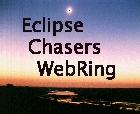S&T's lunar eclipse preview by Alan M. MacRobert:
http://www.skyandtelescope.com/observing/home/15357796.html
http://www.astrophotoinsight.com/node/697
Top 10 Tips for Imaging a Lunar Eclipse
John Drummond, Gisborne, New Zealand
www.possumobservatory.co.nz
10. Know what you will do with the images once you’ve taken them – are they purely for personal use or do you want people around the globe (especially those on the other side of the world who couldn’t see the eclipse) to enjoy them. If you want www.spaceweather.com to use them, be in quick! Or perhaps you want to publish them in the local newspaper, or even in this publication… Also, make sure that you record exposure details (focal length, f-ratio, ISO, exposure length, etc) on printed images for later recall while it’s still fresh in your mind.
9. Know what sort of image you want – do you want a wide angle view with scenery involved or perhaps a Moon-chain across the sky revealing its passage through the Earth’s shadow. Perhaps you want a close-up of only the Moon filling the whole DSLR frame.
8. Once you know your image type experiment with image scale – the shorter the focal length of the lens or telescope the smaller the Moon will appear on the frame. Remember, the Moon is about 30’ (1/2 a degree) in apparent diameter. Ron Wodaski has a very handy program for working out how large the frame FOV will appear with various focal lengths, see: http://www.newastro.com/wodaski/pick_a_camera.htm
7. Have warm clothes, mossy repellent, coffee, etc on hand – this is a rare event, enjoy it. Don’t be battling the cold or mosquitoes as you watch, ‘the celestial dance’ unfolding above (Spock, The Simpsons).
6. Know the eclipse path beforehand – i.e. know what azimuth and altitude the Moon will be at the start, middle, and end of the eclipse. This saves frantically moving imaging gear halfway through the event! Planetarium software programs such as GUIDE (Project Pluto) are very helpful when planning. Also make sure you know the times for your location!
5. Know thy mount – even though the Moon is a bright object and needs only short exposures, it’s helpful to have a motorized tracking mount upon which your lens/telescope can sit and follow the Moon – especially as it gets darker and the exposures will have to be longer. This is very necessary if you are using a longer focal length (e.g. 1500mm) with the resultant large image scale (and large Moon on the frame).
4. Focus, focus, focus - experiment with focusing well before the event. Make a Hartmann Mask if need be, see: http://possumobservatory.co.nz/hartman_mask.htm . There are numerous focusing aids available such as DSLR Focus (Editor's note - DSLR Focus has limited camera support)
3. Experiment with exposure times, focal ratio and ISO – a few nights before the eclipse experiment with your chosen lens/telescope and exposures times. The in-built light-meter works well for this, but have a play and then compare various bracketed images on the computer screen. ISO 400 is a good compromise. For a great resource on recommended exposure times, etc see: http://www.mreclipse.com/LEphoto/LEphoto.html
2. Charge everything! – make sure that all batteries, flashlights, tape recorders, etc are fully charged on the day of the eclipse…and that you have all necessary equipment.
1. Enjoy yourself – sometimes, when such a special celestial event occurs, we run around trying to take as many images with as many cameras and telescopes as possible. At the end you can feel quite exhausted. Something I always have on hand is a deckchair so as to sit down every ten minutes, relax, and enjoy the beautiful changing vista above.
For imaging examples of a lunar eclipse that we enjoyed in New Zealand last August, go to: http://possumobservatory.co.nz/rasnzaps/rasnzaps-comp-2007-08-aug-specia...
Monday, February 18, 2008
Total Lunar eclipse 2/20-21/2008 information
Labels:
astronomy,
earth space,
eclipse eclipses,
lunar eclipse
Subscribe to:
Post Comments (Atom)








No comments:
Post a Comment